NIL
The Weekly Fast Break
We here at The Weekly Fast Break are bouncing into 2025 with a new set of Nikes and a promise to do whatever it is we can do to help our team win. The great Pat Summitt said, “offense sells tickets; defense wins games; and rebounding wins championships.” It’s time we do not drop the ball on the […]
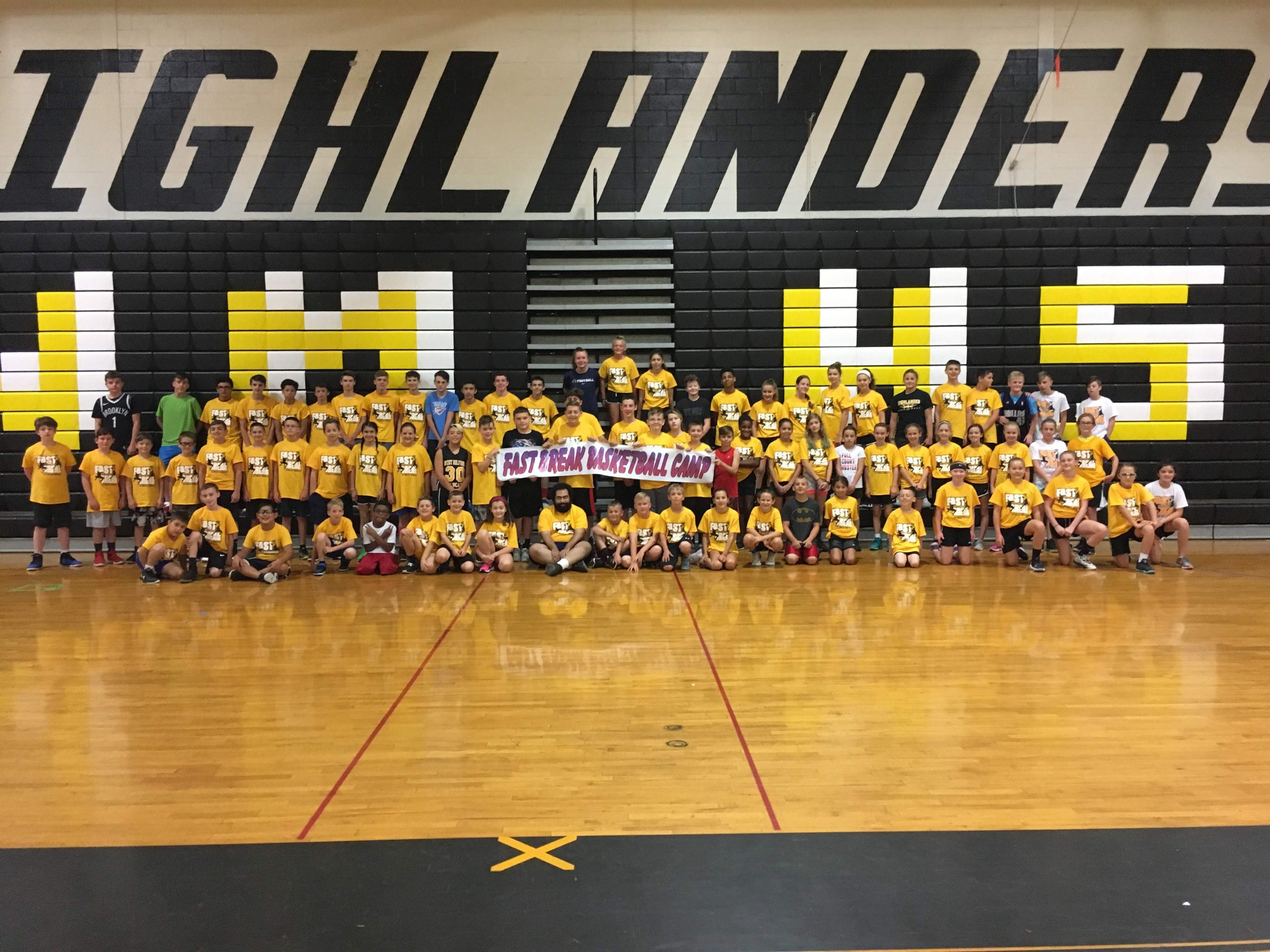

We here at The Weekly Fast Break are bouncing into 2025 with a new set of Nikes and a promise to do whatever it is we can do to help our team win. The great Pat Summitt said, “offense sells tickets; defense wins games; and rebounding wins championships.” It’s time we do not drop the ball on the first day of 2025 but value the possession because we are all in for a wild ride in the new year.
Idaho at Montana State
The Next, a 24/7/365 women’s basketball newsroom
No. 1 UCLA at Indiana
Tip-off
Bear crossing
No. 16 Kentucky at R/V Vanderbilt
You can always go home
No. 5 Texas at No. 9 Oklahoma
Colorado at No. 11 TCU
NDSU at St. Thomas (MN)
If you are looking for offense and a game played with serious pace, this one will be for you. Head coaches Vic Schaefer (Texas) and Jennie Baranczyk (OU) will each dial up a game plan to make this one of the season’s best games. Here are four keys to watch for that may very well determine who claims the one and only Red River Rivalry game in the 2024-25 season:
Want even more women’s sports in your inbox?
No. 2 South Carolina at R/V Mississippi State
UNLV at San Jose State
Poll watch
Subscribe now to our sister publication The IX and receive our independent women’s sports newsletter six days a week. Learn more about your favorite athletes and teams around the world competing in soccer, tennis, basketball, golf, hockey and gymnastics from our incredible team of writers.
Star power
Head coach Natasha Adair served as an assistant coach at Georgetown from 1998-2004 and then returned to Washington, D.C., when she was named the head coach at Georgetown in 2016. She led the Hoyas’ program for three seasons. Junior guard Jalyn Brown, a Louisville transfer, hails from Baltimore and played high school basketball at Riverdale Baptist in Upper Marlboro, Maryland, and St. Frances Academy in Baltimore. Originally from Upper Marlboro, junior Kennedy Fauntleroy played at New Hope Academy in Maryland. She spent one season at Georgetown before transferring to ASU where she was unanimously named the 2023 Big East Freshman of the Year. Junior Kadidia Toure, a Silver Spring, MD native, started her career at James Madison before heading west to Tempe.
Gonzaga at R/V Portland
No. 3 Notre Dame at No. 17 UNC
Film session – Game preview
Every player, coach and fan will usher in the new year with their own set of resolutions — everything from being a better defender in the half court to spending less time listening to pundits tell us why we are not winning. But in the end, what we know to be true, regardless of your resolution to cheer louder or exercise every day, is that college basketball is destined to be that much better in 2025.
Pitt at No. 14 Duke

Cleveland State at Oakland
- Possessions: The Sooners want to play fast and get as many possessions as possible in 40 minutes. They will look for transition three-point shots (senior guards Payton Verhulst and Lexy Keys are their top threats) and will push in transition every chance they get. Texas knows they must be solid in their transition defense to contain OU in the open floor and once the ball crosses halfcourt, you must find shooters who are spotted up.
- Post presence: OU has a post weapon it did not have last season — 6’4 junior Raegan Beers, the all-conference transfer from Oregon State. She is leading the Sooners in scoring (17.9 points per game) and rebounding (9.7 per game). Texas will need to create matchups that force her out of the paint and limit her touches. Look for Longhorn seniors Taylor Jones and Aaliyah Moore to attack Beers on both ends. The more time she spends on the bench in foul trouble the better it is for Texas.
- Contain Booker: Sophomore sensation Madison Booker leads Texas at 16.3 points per game. With the return of Harmon at the point position, Booker is back to her natural off-guard spot. She is thriving with her mid-range game but has added a new weapon to her scoring arsenal — she has knocked down 13 threes so far this year. The Sooners will need to not only contain the 6’1 forward off the dribble but now you must honor the deep threat.
- Turnover margin: Texas is forcing 25.4 turnovers per game on the year while Oklahoma has given it up 17.5 times per game. The defensive pressure from Texas will be relentless and physical for 40 minutes. The good news for OU is they have seen it before — Verhulst, Keys and point guard Nevaeh Tot are no strangers to the non-stop pressure that will come at them. Limiting the live ball turnovers will be critical for the Sooners — giving Texas runouts and points off turnovers is a recipe for disaster.
Add Locked On Women’s Basketball to your daily routine
Here at The Next, in addition to the 24/7/365 written content our staff provides, we also host the daily Locked On Women’s Basketball podcast. Join us Monday through Saturday each week as we discuss all things WNBA, collegiate basketball, basketball history and much more. Listen wherever you find podcasts or watch on YouTube.
Full court press
The Next: A basketball newsroom brought to you by The IX. 24/7/365 women’s basketball coverage, written, edited and photographed by our young, diverse staff and dedicated to breaking news, analysis, historical deep dives and projections about the game we love.
Auburn at No. 6 LSU
Wisconsin at Oregon
While it may not happen often, there truly is no place like home. *Special thanks to Rob Knox of The Next
Jan. 2
It was a slow week before and after the Christmas holiday which has left the AP Poll in as quiet of a spot as it will be all season. The top 18 spots remain unchanged with UCLA cemented at No. 1 with their 13-0 record. Alabama rose one spot to No. 19 and Cal is up one as well to No. 20. Michigan State and Michigan each fell two spots but remain in the Top 25. Eight SEC teams dot this week’s poll with Vanderbilt receiving 26 votes. Utah garners 24 and is on the outside looking in at No. 27. Harvard (3 votes) and Portland (1 vote) represent the mid-majors this week as everyone hits the ground running in conference play.
Jan. 3
Southern Miss freshman guard Trinity Rowe earned Sun Belt Conference Player of the Week after she posted a career-high 25 points in the Golden Eagles’ conference-opening win over Georgia State on Dec. 29. The reigning 2024 Miss Kentucky Basketball and Pikeville, Kentucky, native drilled seven three-pointers, which tied for second on the all-time single-game records for Southern Miss women’s basketball. So far this season Rowe is shooting 43.9% from behind the arc, which ranks 27th nationally and leads the Sun Belt Conference.
Norfolk State at Delaware State
Sometimes in this crazy world of college basketball, we forget how hard it is to be away from home. When players get the opportunity to play close to home in front of family and friends, old teammates and coaches, it can be a very special experience. In early Dec. 2024, Arizona State traveled east for a pair of games at Coppin State (Dec. 5) and Maryland Eastern-Shore (Dec. 7), bringing four players and their head coach back to the Baltimore-Washington area where each has ties that run deep.
Jan. 5
Fairfield at Rider
Belmont at Southern Illinois
R/V Utah at Iowa State
Kansas at R/V Oklahoma State
Richmond at Fordham
Harvard at Yale
BYU at No. 18 West Virginia
No. 9 Oklahoma at No. 15 Tennessee
Jan. 6
Graduate student Tyi Skinner is originally from Washington D.C. and after starting her career at Delaware under Adair, she transferred to ASU. She missed last season due to an ACL injury and so her return to the court and the East Coast this season have been memorable. “I haven’t been home in a year after I tore my ACL last year because I had to stay in Arizona and recover. Going back home to my family, I noticed that many people hadn’t seen me in quite some time or others had never seen me play before. It’s a great experience and was special to see while feeling all the love and support from everybody,” she told The Next.
Florida at No. 19 Alabama
No. 20 Cal at Clemson
No. 6 LSU at Arkansas
Air Force at Boise State
No. 2 South Carolina at Missouri
R/V Illinois at Minnesota
For the fourth time this season, Georgia Tech guard Dani Carnegie was named ACC Rookie of the Week. The freshman guard had 24 points, including four 3-pointers, along with five rebounds and two steals in Georgia Tech’s 100-61 domination of Pitt on Dec. 29. The Mount Vernon, New York, posted her fourth game this season with 20 or more points, including her last two outings. Carnegie currently leads all ACC freshmen in scoring at 15.1 points per game.
South Dakota State at Oral Roberts
With game action on the light side the past 10 days, we decided to steer our analysis not at the result, but to preview what lies ahead. On Thursday, Jan. 2, the newest members of the SEC will square off in their first game in a new conference, but they are by no means strangers. No. 5 Texas will travel to Norman, Okla., to take on the No. 9 Oklahoma Sooners, keeping the Red River Rivalry alive this season. This will be the only meeting between the two teams this year and it has all the storylines for a monster SEC opener. Oklahoma won both matchups in their final season in the Big 12 last season. The Sooners claimed the regular season title (clinching it with that 71-70 win over the Longhorns on Feb. 28) while Texas won the 2024 Big 12 Tournament crown in Kansas City, Missouri, defeating Iowa State in the final.
These long-standing rivals seem to have more in common this season than what sets them apart. Both teams have just one loss (ironically each to an ACC team) and are averaging 91.6 points per game. Both rosters are a mixture of veteran returners and new faces from the portal, along with standout freshmen who are getting quality minutes on the floor. Each team welcomed back key players who missed last season due to injury — guard Rori Harmon of Texas and forward Liz Scott for OU.
No. 23 Iowa at Penn State
Stony Brook at Drexel
Liberty at Middle Tennessee
No. 20 Cal has matched its best start since the 2016-17 season at 13-1 and is riding a seven-game winning streak into the heart of ACC play. The only blemish on the Bears’ record is a six-point loss to now No. 21 Michigan State back on Nov. 26 in Palm Springs, California, and since then they have beat No. 19 Alabama and ACC foe Stanford 83-63. Cal is averaging 78.3 points per game on the back of a three-point shooting system that is proving to work. Head coach Charmin Smith’s team is top 10 in the nation at 38.6% from deep and ranks fifth nationally with 10.5 made threes per game. Two of the top three-point shooters in the country are leading the way for Cal — guards Lulu Twidale and Ioanna Krimili — both of whom are top 10 in the country in total three-point shots made on the season. Krimili, a graduate student originally from Greece, ranks eighth nationally with 3.36 makes per game from behind the arc. In their 13 victories, the Bears have beaten opponents by a margin of 19.1 points per game this season. They resume ACC play on Jan. 2 at Clemson — the Tigers may want to put up some Bear-crossing signs this week.
Jan. 7
Many of you have set forth a resolution in 2025 to exercise more and eat healthier. This is a goal we absolutely support and are trying our best to do as well. However, if there is one thing we do know, most of the human population has the same thought and many of them will be at your local health club or community center this week. The crowds will be insane and there will not be an open treadmill in sight. So here is our solution — start your resolution plan next week, and spend the next few days eating and drinking what you want while you watch some top-shelf basketball (check your local listings for game times and broadcast availability):
No. 11 TCU at Kansas
Murray State at Missouri State
UCF at No. 18 West Virginia
Lindenwood at Eastern Illinois
Jan. 1
Texas Tech at No. 12 Kansas State
No. 7 UConn at Marquette
This week, triple-double star power is fully directed at South Bend, Ind. Point guard Olivia Miles was named ACC Player of the Week after a historic performance in Notre Dame’s win over Virginia on Dec. 29. Miles’ triple-double of 11 points, 10 rebounds and 14 assists was her third triple-double of the season and sixth of her career. The 5’10 junior is now tied with former Maryland All-American Alyssa Thomas for most career triple-doubles in ACC history. Miles is also the first-ever ACC player to notch back-to-back triple-doubles after she posted 18 points, 11 rebounds and 10 assists against Loyola Maryland on Dec. 22. This is the second ACC weekly award for Miles this season.
SIUE at Eastern Illinois
No. 1 UCLA at Purdue
Jan. 4
*All statistics cited in this column are sourced from university and conference-provided statistics
Readers of The Next now save 50% on their subscription to The IX.
No. 24 Michigan at No. 1 UCLA
Buffalo at Kent State
R/V Nebraska at No. 4 USC
NIL
Blue Jays Roundup: Avery Graves named All-State
Jun. 6—JAMESTOWN — One Blue Jay was recognized as one of the best in the state of North Dakota. Avery Graves, a junior for the Jamestown High School softball team, was named to the 2025 Class A Softball All-State Team on Friday. Advertisement Graves, the starting first baseman, posted a batting average of .449 and […]

Jun. 6—JAMESTOWN — One Blue Jay was recognized as one of the best in the state of North Dakota.
Avery Graves, a junior for the Jamestown High School softball team, was named to the 2025 Class A Softball All-State Team on Friday.
Advertisement
Graves, the starting first baseman, posted a batting average of .449 and a slugging percentage of .692 this season. The senior produced 48 hits — 32 singles, 11 doubles and five home runs. The junior recorded 48 RBIs.
2025 Class A Softball All-State Team
Avery Graves, Jamestown
Halle Baker, Minot
Madison Aadland, West Fargo Sheyenne
Jocelyn Berg, Grand Forks Red River
Riley Ingemansen, Legacy
Rylee Irgens, Williston
Mya Jones, Bismarck High
Katelyn Kackman, West Fargo
Olivia Kalbus, Fargo North
Aubrey King, Fargo North
Mackenna Medina, Dickinson
Jada Purdy, Fargo North
Sophia Rerick, Fargo Davies
Cadey Shipman, Minot North
Advertisement
Gabi Sobolik, Dickinson
Brooklyn Soderberg, Grand Forks Red River
Presley Tveter, West Fargo Sheyenne
Kaebry Weekes, Mandan
Ali Wilcox, Williston
NDHSCA POWERade Outstanding Senior Athlete — Aubrey King, Fargo North
NDHSCA SUBWAY Coach of the Year — Jesse Stundal, Williston
NIL
EA Sports to pay schools based on how often they’re played in new College Football video game
The long-awaited approval of the House settlement late Friday night is supposed to make it more difficult for individuals to affect the NIL market. Moving forward, players will be paid through highly-regulated revenue share payments directly from their schools, and third-party-approved NIL payments for “legitimate” business purposes. But if every single gamer gets together and […]

The long-awaited approval of the House settlement late Friday night is supposed to make it more difficult for individuals to affect the NIL market. Moving forward, players will be paid through highly-regulated revenue share payments directly from their schools, and third-party-approved NIL payments for “legitimate” business purposes. But if every single gamer gets together and decides to play EA Sports College Football 26 exclusively as the Akron Zips, together they can potentially tip the balance of power in the Mid-American Conference.
In short, schools will receive royalty payments for how often users play as them within the game. From the documents:
“For each CFB product released by EA SPORTS, we (CLC Learfield) will provide a percentage for each institution based on the games played for that institution as a percentage of the total games played across all institutions. This percentage of games played will become the final allocation percentage for each school that will be applied to the total gross royalties for all institutions received.”
Now, we have lots of questions:
1) How much money is set aside in this fund?
2) How is EA calculating what percentage of total revenue goes into this fund? Typically, royalties are derived from a percentage of overall sales — i.e., if I sell 100 Albert the Gator keychains for $5 apiece, the University of Florida would get 10 percent of that $500. But EA gets its money when people buy the game, not when they play it.
3) Does this royalty fund last forever? Are schools going to be getting checks in 2031 for how often they’re being played in College Football 26?
College Football 25 needed only five months to become the best-selling sports video game of all-time, and it was streamed a reported 1.7 billion times. It’s unlikely the sequel will duplicate those numbers given the decade-plus wait for College Football 25, but 26 will still be a widely-selling game.
The new royalty structure replaces the previous edition, where EA Sports slotted teams into tiers based on how often they appeared in the year-end AP Top 25 over the previous decade. The 13 schools who made it into Tier 1 received nearly $100,000 in royalties apiece, while the 54 schools in Tier 4 netted around $10,000.
All 136 FBS schools opted into EA’s new pay-for-play royalty structure, so clearly they believe this system has more in it for them.
The players will also see higher checks for appearing in 26 vs. 25. Each player received a $600 check and a free copy of the game for appearing in College Football 25, but in 26 they’ll receive between $1,500 and $3,000 apiece.
NIL
College sports power conferences hire MLB exec to serve in CEO role after House v. NCAA settlement approval
College sports’ power conferences — Big Ten, SEC, ACC and Big 12 — have hired a high-profile investigator in professional sports to lead their new governing body that will oversee revenue sharing and NIL contracts. MLB executive Bryan Seeley has been hired after a months-long search for a CEO to lead the new College Sports […]

College sports’ power conferences — Big Ten, SEC, ACC and Big 12 — have hired a high-profile investigator in professional sports to lead their new governing body that will oversee revenue sharing and NIL contracts.
MLB executive Bryan Seeley has been hired after a months-long search for a CEO to lead the new College Sports Commission, a spokesperson for the power conferences told CBS Sports on Friday. Seeley emerged as the leader in May as the four commissioners, alongside a group of athletic directors, began finalizing plans for implementation of the long-awaited House v. NCAA settlement, which was approved on Friday.
All four power conference commisioners released a joint statement commending Seeley’s hiring.
“Bryan brings unwavering integrity and a wealth of relevant experience to his new role leading the College Sports Commission and working to ensure a smooth implementation of this new system,” the statement read. “We’re grateful to have an individual with his credentials and expertise at the helm, and we look forward to his leadership as we transition into this new era of college sports.”
Seeley has spent the last decade working for MLB, where he is currently the executive vice president of legal and operations. He was hired in September 2014 to lead MLB’s investigation department after a career as a federal prosecutor and an assistant U.S. Attorney for the Department of Justice’s public corruption section.
“Bryan is an exceptional choice to lead the College Sports Commission,” Major League Baseball Commissioner Rob Manfred said. “During his time at MLB, Bryan demonstrated unparalleled integrity, a commitment to fairness, and the ability to navigate complex challenges with precision and care. I have no doubt he will bring the same level of excellence to the College Sports Commission. College sports will greatly benefit from Bryan’s expertise and vision.”
House v. NCAA settlement fundamentally alters college athletics, but don’t expect it to bring stability
Chris Hummer
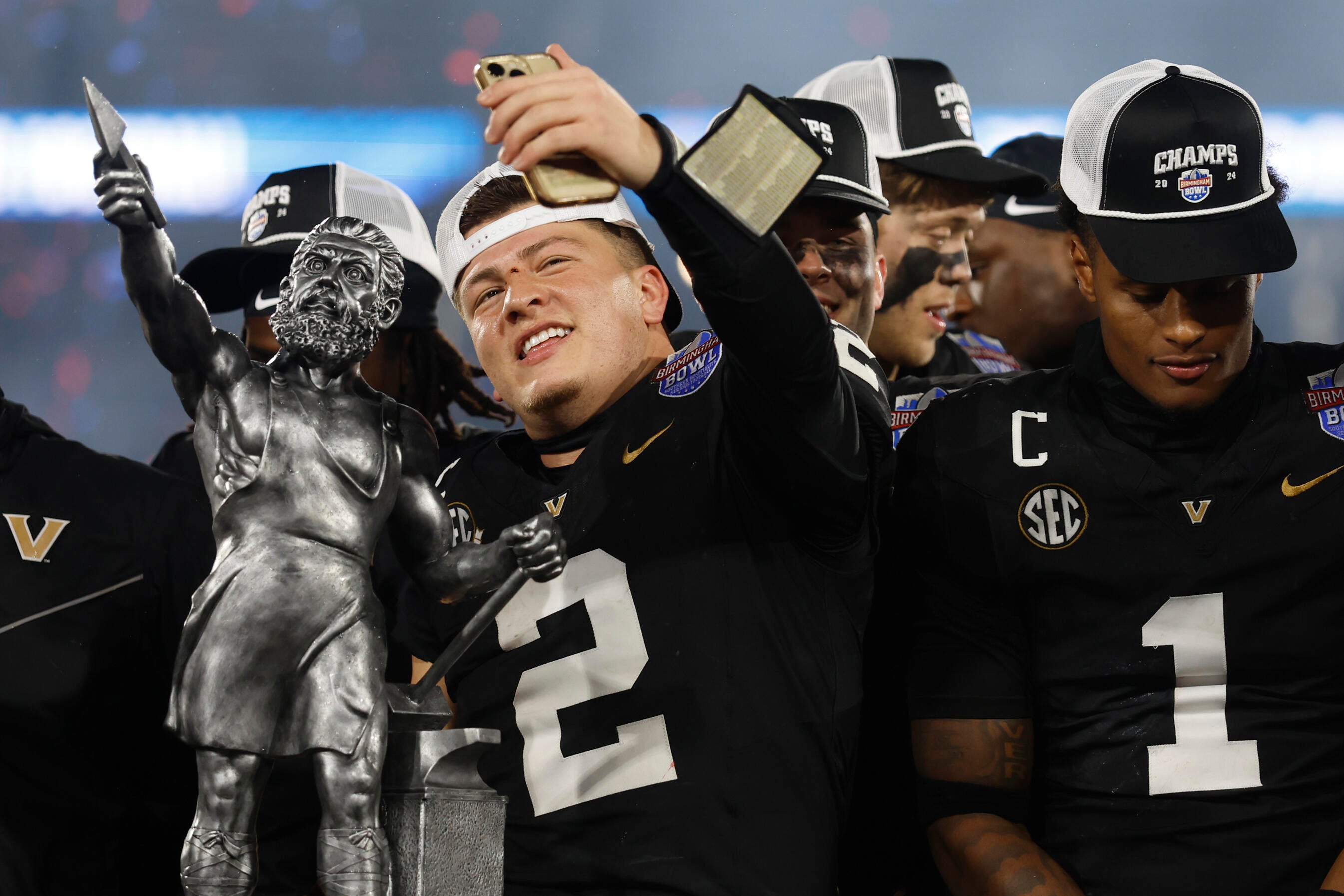
He had an extensive career as an investigator for MLB, where he led baseball’s investigation into sign stealing, which led to penalties for the Houston Astros and Boston Red Sox. He recently penned a letter to the Commodity Futures Trading Commission lobbying for more integrity for exchange-based platforms.
Seeley will report directly to the ACC, Big Ten, Big 12 and SEC’s commissioners in his new role. Seeley worked alongside Big Ten commissioner Tony Petitti when Petitti led the MLB Network in the late 2010s. Petitti was crucial in the targeting of Seeley as the CSC’s new CEO, sources told CBS Sports.
On Friday, Judge Claudia Wilken finally approved the $2.8 billion settlement after weeks of waiting from plaintiffs and the defendants in the landmark antitrust case. The CSC will be overseen by the power conferences and mostly operate outside the NCAA’s rules-enforcement umbrella.
The CSC will police and enforce NIL and revenue-sharing rules tied to the terms of the House settlement. In essence, the CSC is set to become a smaller, more agile version of the NCAA’s enforcement arm. The CEO will have final say on settlement-related items and enforcement of fair market value NIL deals of greater than $600, according to sources.
Scrutinized NIL deals would be subject to arbitration, and if the third party sides with the CSC’s findings, players and universities would face penalties — the severity of which is not yet entirely known. The new CEO is expected to have considerable latitude to penalize as they see fit, according to those familiar with the situation, and won’t be boxed into a strict penalty structure that must be followed.
An athlete who accepts a deal flagged by a Deloitte-administered clearinghouse called “NIL Go” as “pay for play” and does not meet a fair market value range would be ruled ineligible. The clearinghouse will give a range — say $75,000-$85,0000 — on what a deal should be worth based on market data and will flag a deal that fits the criteria but is for more than that amount. While the NCAA’s investigations typically take months to years, the CSC is expected to conduct and close investigations in a considerably more timely manner. The hope is that the process will be more transparent, too, and give schools more opportunity to have a say in it.
Meanwhile, the membership agreement for the CSC has prompted questions about its legality in a system that has been under attack in the court system for years, from the O’Bannon case to Alston to House, which was filed in 2020 and helped lead to the implementation of NIL regulations from the NCAA in 2021. Those regulations, however, have proven toothless in the face of legal challenges and legislation in more than 30 states. The question that arises now anytime new rules are introduced: Is this legally enforceable?
The thinking among college leaders is the CSC will have some legal protection because of the House settlement. Current players who opt into the settlement are bound to the terms, which include the formation of the CSC as an enforcement entity. That entity, as explained in the settlement terms, is required to install a binding arbitration process, which players are required to follow as members of the settlement. Essentially, the athletes cannot sue over a deal flagged as not meeting fair market value.
“Unless the new state laws specifically create a new legal claim that gives them right to sue, which I don’t think they do, the players’ legal claims would still be wiped out by the settlement,” said Sam Ehrlich, a sports law professor at Boise State. “And even if the rules do allow players to sue, there’s a strong argument that the settlement also blocks similar claims under state law since it’s a similar field of law.”
NIL
The biggest winners and losers from House v. NCAA settlement: Amateurism is dead and the class divide grows
The long-awaited House v. NCAA settlement is finally a reality, paving the way for universities to pay their athletes directly starting on July 1. There is a lot to consider in what could be the most consequential day in college sports history. How are schools going to actually pay their athletes? Who will be policing […]
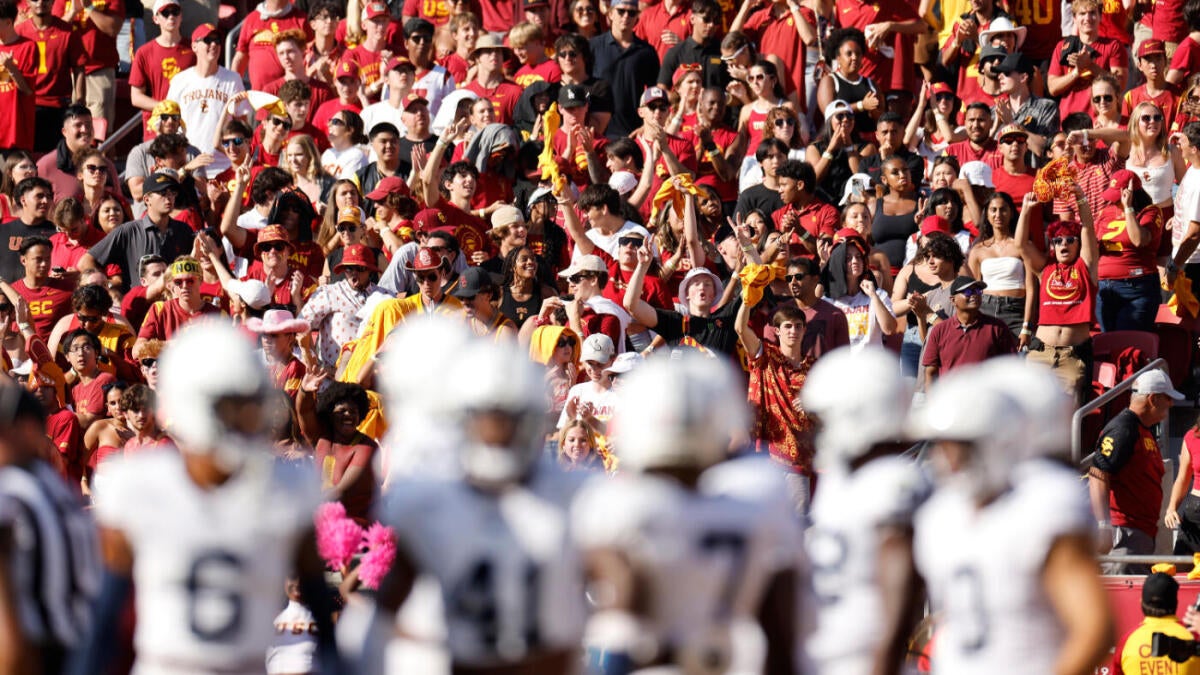
The long-awaited House v. NCAA settlement is finally a reality, paving the way for universities to pay their athletes directly starting on July 1.
There is a lot to consider in what could be the most consequential day in college sports history. How are schools going to actually pay their athletes? Who will be policing this new revenue share world? Will much-needed stability actually come from a House settlement some have hyped as a magic bullet?
Within it all, there are some clear winners and losers who will have their realities dramatically changed in this new post-House world.
Winner: Athletes in the ‘revenue’ sports
It won’t be exclusively football and men’s basketball athletes who will benefit from the House settlement, but they are certainly the biggest benefactors. Those two sports have propped up athletic departments for years, generating the bulk of the revenue and seeing none of the profits. Now schools will have to pay their top athletes considerable money on top of the NIL money they can make elsewhere that’s already been a major boon for many of them.
It is stunning how far things have come in just the last decade, from fights over what are now relatively paltry cost-of-attendance stipends to a world in which football and basketball players can and do make millions.
Loser: Renegade boosters
The early years of NIL featured unique characters like Miami booster John Ruiz who weren’t shy about being willing to spend big money to see their favorite teams win. The money has exploded in recent years from the reported $20 million Ohio State team that won the national championship last season to the $40 million roster era as Indiana’s Curt Cignetti told CBS Sports this spring. In theory, those days are over.
Yes, there is considerable industry skepticism about how a clearinghouse called NIL Go will actually hold up to legal scrutiny and stop boosters from using NIL solely as “pay to play,” but if it does work, as the NCAA and Power Four conferences desperately hope it does, the days of spending $3 million on a defensive end for NIL will be over and eliminate an advantage schools with especially well-heeled boosters have exploited the last four years.
One additional note here: Schools that can tap into local businesses willing to spend real NIL money will be at a big advantage if NIL is strictly policed for “fair market value” as the clearinghouse intends. If your school campus happens to be located in a lucrative metro area, even better.
Winner: The future of collective bargaining
Now that the concept of paying athletes directly is a reality, look for attention to turn to collective bargaining/employment/unionization as the next big topic college sports has to grapple with. There are organizations including Athletes.org that have anticipated this moment and are ready to help push for collective bargaining to help solve many of the new issues that come with the House settlement’s approval.
College athletes becoming employees is the nightmare for many college administrators but you’re seeing a warming to the idea of collective bargaining, including recently from University of Tennessee chancellor Donde Plowman and AD Danny White. A looming case, Johnson v. NCAA, may well rule that athletes should be considered employees. In the meantime, look for more and more ADs and other college sports executives to come around to the idea collective bargaining might be the best hope to enforce rules and solve tricky issues such as the current twice-annual free agency (transfer portal) that has deeply frustrated coaches like Georgia’s Kirby Smart.
Loser: Amateurism
The “student-athlete” moniker has long been a fraud and part of the NCAA’s original sin, but its death becomes official now that universities are able to pay their athletes directly beginning July 1. This has been a long, long time coming and the result of major lawsuits — O’Bannon, Alston and House, to name three — and state laws building to this big moment. Not all fans may like it, but the days of top athletes only receiving room and board are over.
Winner: The Big Ten and SEC
The two richest conferences that will get more money from the College Football Playoff and their TV rights deals than their fellow Power Four brethren (ACC and Big 12) are set up well for this new revenue share world. That’s not exactly a new development — those conferences were doing pretty well in the old system, too — but it should cement their reign over college athletics. And if we see future realignment, or consolidation, more likely it will be because of a deep desire to be in one of these two conferences to help pay for the ballooning expenses that come with revenue sharing.
Winner: Big East basketball
Much of the House settlement focus will be on football but the Big East has set itself up well to benefit in college basketball. We’ve already seen Big East schools work an advantage headed into the 2025-26 season, committing more revenue share money for men’s basketball than many of their peers because they don’t have to worry about spending tens of millions on football.
‘He played us like a drum’: Inside Kevin Willard’s turbulent Maryland departure
John Talty
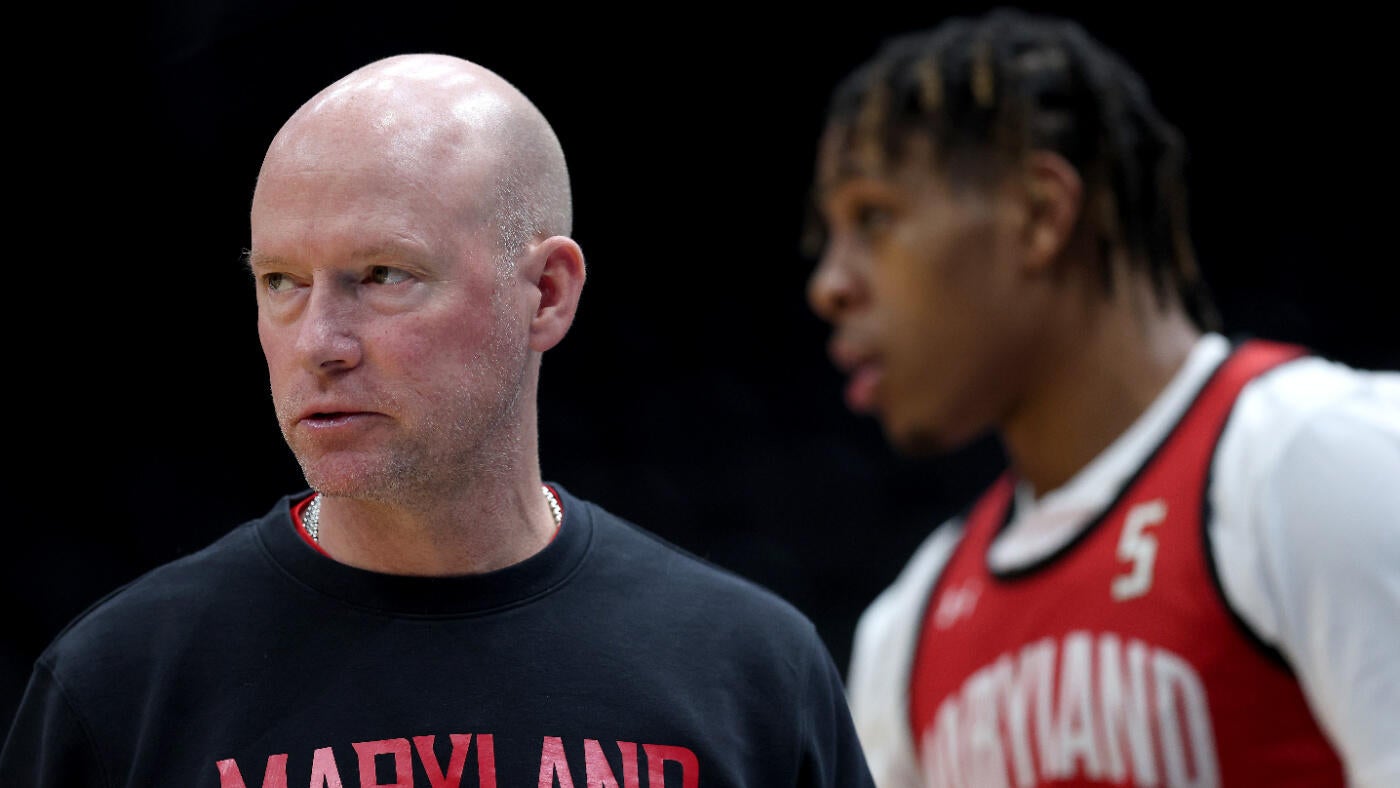
In theory, at least, Big East schools could spend the entire $20.5 million salary cap on just basketball. Or, more realistically, spend $8-10 million when schools in the Big Ten and SEC are largely in the $2.5-$4 million range. There has been talk about some conferences trying to instill sport-specific spending caps, but there is real skepticism that would fly sport-wide. Assuming it doesn’t, the Big East, along as its schools can come up with the cash without the big football-driven TV rights deals, could have a significant money advantage in revenue share spending.
Loser: Group of Five schools
For years now there have been comments about the chasm between the haves and have-nots growing larger, but that is only amplified with this settlement. It will be increasingly difficult for Group of Five schools — and even some smaller Power Four schools — to keep up with the bigger schools if they can’t fully fund the $20.5 million cap, which will only go up in the years to come. You’ll see schools partially fund in certain areas, including football and basketball, but it might be in the $2-3 million range for football when SEC and Big Ten schools will annually spend $13-16 million. There may still be some David vs. Goliath upsets in football like we saw last year (say, NIU over Notre Dame), and if the College Football Playoff format remains the same one, Group of Five school will still make the playoff, but it’ll be more challenging than ever for those schools to compete at the highest levels.
Loser: Non-revenue sports
Similar to the Group of Five concerns, the Olympic sports at many universities face a tough path moving forward. When athletic departments now have to share the revenue, it gets harder to pay for sports that lose money, which is everything that’s not football or basketball outside of a few exceptions at different schools. What does this look like in practicality? The doomsday option is eliminating sports altogether which some schools are already doing with sports like tennis that neither bring in revenue nor television exposure.
The less aggressive yet still impactful measures could include reducing scholarships, refusing to give coaches raises and even cutting back on the free meals available to every athlete. Athletic directors are looking for places to cut expenses everywhere and the non-revenue sports will be a popular place to look.
Winner: Billable hours
As the saying goes, billable hours are undefeated. That’s certainly true with the House settlement. The class action counsel, led by Jeffrey Kessler and Steve Berman, are expected to receive a whopping $484 million for their work in bringing the class-action lawsuit to completion. Considerable money has been spent by the NCAA and House defendants on attorneys, too. And, of course, there will likely be more lawsuits to come — especially from a Title IX angle — once the schools begin officially paying athletes. There’s never been a better time to be a lawyer with an interest in college sports.
NIL
Light the Tower! Texas softball national title sets off celebration, social media frenzy
Light the Tower! As soon as the Texas Longhorns softball team secured its first NCAA National Championship with a 10-4 win over Texas Tech in Game 3 of the Women’s College World Series, the celebrations started in Oklahoma City’s Devon Park, on the University of Texas Campus and all over social media. From Matthew McConaughey […]
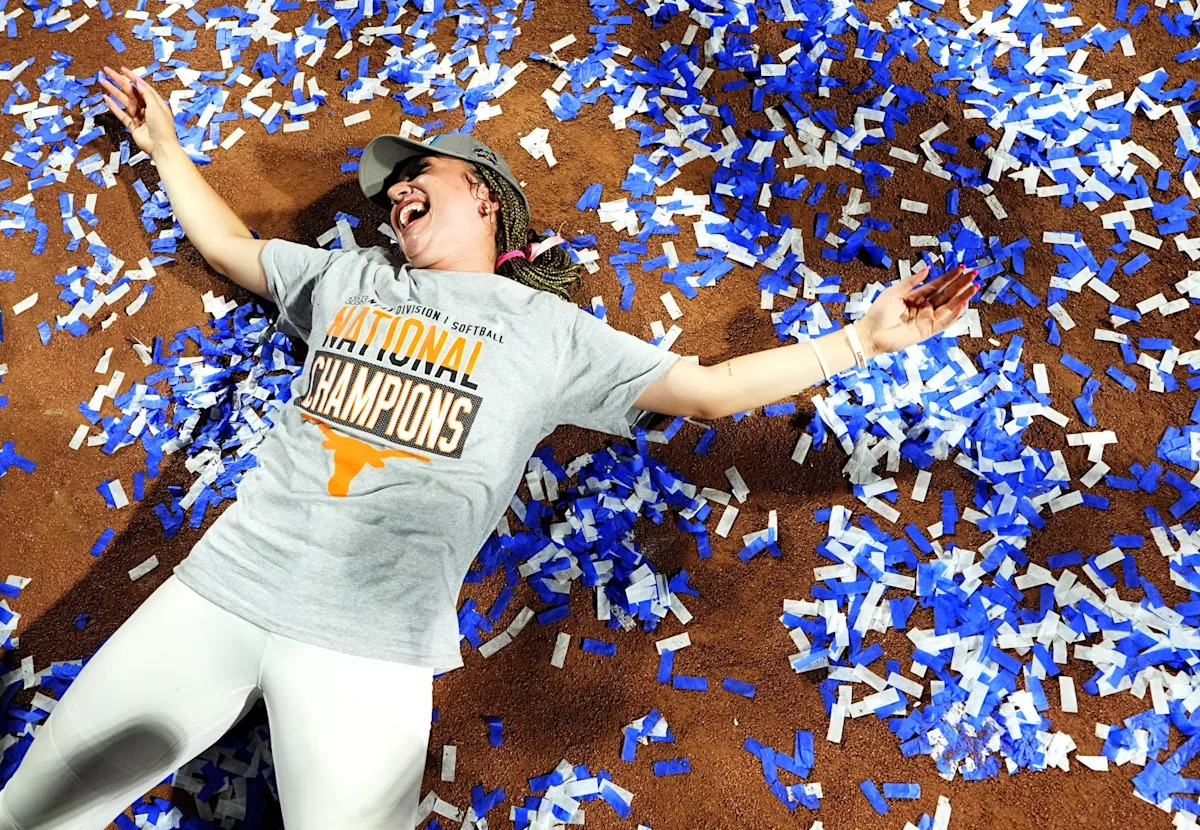
Light the Tower! As soon as the Texas Longhorns softball team secured its first NCAA National Championship with a 10-4 win over Texas Tech in Game 3 of the Women’s College World Series, the celebrations started in Oklahoma City’s Devon Park, on the University of Texas Campus and all over social media.
From Matthew McConaughey to Longhorns softball legend Cat Osterman to former Texas football great Eric Metcalf all posted congratulations to the first Texas team to win the WCWS title in eight tries. Even Major League Baseball and the Houston Astros sent out congratulations.
Advertisement
On the field, the players and staff celebrated with trophies and confetti. Texas ace pitcher Teagan Kavan was named the WCWS outstanding player. Kavan didn’t give up a single earned run in the tournament.
Even Texas Tech super fan Patrick Mahomes tipped his hat on Twitter.
Longhorns fans that didn’t make the trip to OKC will get to celebrate with the team Saturday evening at Red & Charline McCombs Field at 6 p.m. CT. The gates open at 5 p.m. CT and admission is free.
Follow us on X (formerly Twitter) at @LonghornsWire.
This article originally appeared on Longhorns Wire: Texas softball national title sets off celebration, social media frenzy
NIL
House vs NCAA just massively changed Nebraska, the rest of college sports forever
Talk about your Friday night news dump. Late Friday evening, the college sports world changed forever, and unfortunately, there were plenty of impacts on the Nebraksa football program and the Nebraska Cornhuskers athletic department in particular that had huge negative connotations. Judge Claudia Wilken signed off on the House vs NCAA settlement, putting a swatch […]

Talk about your Friday night news dump. Late Friday evening, the college sports world changed forever, and unfortunately, there were plenty of impacts on the Nebraksa football program and the Nebraska Cornhuskers athletic department in particular that had huge negative connotations.
Judge Claudia Wilken signed off on the House vs NCAA settlement, putting a swatch of new rules on major college sports. Most of those will have some positive effects. Still, it’s important to note that an awful lot of the ruling benefits the NCAA and administrators as they once again limit athletes, especially the methods and amounts they can be paid.
For Nebraska football, especially, the House vs NCAA settlement means that the walk-on program is over as we’ve known it for decades. While the Huskers will still have walk-ons, Matt Rhule and company won’t be able to take as many as they want. Let’s dive deep into every bit of what this massive change means, especially since it’s happening faster than most might have expected.
Roster limits will change how Nebraska football above others does business
There are now roster limits for every sport. The one that’s been reported the most is the 105-man roster for football, but men’s and women’s basketball now have a 15-person cap, baseball is capped at 34, men’s and women’s soccer allows for 28 players, softball is set to 25, and volleyball has 18 players.
The key here, for Nebraska football, for example, is that the athletic department can offer 105 scholarships. Or it can offer 85 scholarships and then have 20 walk-ons. It’s expected that’s how most programs will work.
The same approach will likely apply to the other sports. Husker baseball can offer 34 scholarships over the current, much smaller limit. Still, it almost certainly won’t go that high, mainly because every university also has new costs, both in paying its share of the $2.7 billion House Settlement and with the arrival of the new revenue sharing era.
There is one important caveat here. Judge Wilken forced the NCAA to insert “grandfather clause language into the agreement. That language was meant to protect any player who joined the programs this year and then had to leave or was kicked off because of the roster limits.
Essentially, anyone who wants to stay at Nebraska or elsewhere will be able to do so and not affect the 105-man roster until the natural end of their college career. It will be interesting to see if any guys who left this spring decide to come back. It seems unlikely, but not impossible.
It also means that, for now, the Cornhuskers and others don’t need to get down to 105. Considering NU is currently sitting at an official roster of 129, that’s good news for the guys currently on the team. This massive change won’t take effect in totality for a couple more seasons, though that also complicates things, as coaches and newly minted general managers will need to keep track of where they’ll sit when a player leaves and how many guys they can take in each season.
How will revenue sharing work at Nebraska and other programs?
Revenue sharing will be carried out similarly to how salary caps work in professional leagues. Every year, revenue numbers from the power conferences will be plugged into a formula, and then a rev share cap will be spit out the other end.
For the 2025-2026 season, the cap is expected to be around $20.5 million per school. That’s the entirety of the pool for all sports. It will then be up to people like Troy Dannen to decide how to split that pie up among football, baseball, basketball, volleyball, etc.
It’s thought that most major programs, like Nebraska football, will receive between $13 and $16 million, and the other sports will share the rest.
How this gets split is incredibly important because while NIL will still exist, it’s about to undergo a major shift in how it works. The Wild West, at least for now, is gone.
NIL Go changes the pay-for-play landscape
Schools paying players through NIL money directly is officially over. A new clearinghouse called NIL Go will officially be born next week (they announced the man who will oversee it just an hour after the settlement became law in former MLB exec Bryan Seeley). It will have sole authority over what NIL deals can be made when it goes into effect.
Chief among the new rules is that pay-for-play is gone. When a new NIL deal is signed, it must be between the athletes and a third party (not anyone affiliated with the schools).
The agreement must also involve deals that involve services rendered. And the payment must be a “reasonable amount” for an endorsement—no more $1 million paydays for an Instagram post.
NIL Go must approve any NIL deal that pays more than $600. There will be a process where the deal will either be approved, denied, or need more review. If the agreement is rejected, athletes can try to make a new one or appeal for arbitration.
This process is laid out to make it very hard for Nebraska athletes and others to get any deal they want and work around the rules. Expect lawsuits aplenty once players start getting their NIL deals denied.
Important dates for Nebraska fans to know
So, when does all this go into effect? We’re used to thinking we have at least a few months to get a feel for massive new changes to how college athletics work. That’s not the case here. This all begins next week.
- June 11: NIL Go opens its doors and becomes the law of the land.
- June 15: Schools not directly involved in the settlement (Group of 5 FBS schools) must officially opt in to the deal and essentially remain part of FBS.
- July 1: Revenue sharing payments from the school to the athletes begin.
- July 6: Schools using the grandfather clause to exceed the roster limits must officially designate which players qualify.
- Start of school year: All teams must be down to their roster limits (outside of grandfathered players) by “the start of competition.” This means August 28 for Nebraska football.
- December 1: Winter sports (basketball, volleyball) must also reach their roster limits by the start of competition or December 1, whichever comes first.
The House vs NCAA settlement is a significant shift for college sports. If you thought NIL and the transfer portal were a new era, you ain’t seen nothing yet. That Nebraska football, the rest of the Cornhuskers sports, and the rest of the sporting world have to adapt and change most of this stuff in a matter of weeks is only going to make it more complex.
-

 College Sports3 weeks ago
College Sports3 weeks agoPortal Update – Basketball and Gymnastics Take Hits
-

 College Sports3 weeks ago
College Sports3 weeks agoPortal Update – Basketball and Gymnastics Take Hits
-

 Professional Sports2 weeks ago
Professional Sports2 weeks agoJon Jones answers UFC retirement speculation as fans accuse champion of 'holding the belt …
-

 Health3 weeks ago
Health3 weeks agoBYU women's basketball guard injures ACL twice
-

 Youtube3 weeks ago
Youtube3 weeks agoXavier Legette taught Marty Smith his signature celly
-

 NIL2 weeks ago
NIL2 weeks ago2025 NCAA Softball Tournament Bracket: Women’s College World Series bracket, schedule set
-

 College Sports3 weeks ago
College Sports3 weeks agoIU basketball recruiting
-

 College Sports3 weeks ago
College Sports3 weeks agoNCDC Commitment Profiles: Cyclones’ Martins Moving On to Saint Anselm College • USPHL
-

 High School Sports3 weeks ago
High School Sports3 weeks agoToday in the MHSAA
-

 Motorsports2 weeks ago
Motorsports2 weeks agoWhy IHOP Rode With Dale Earnhardt Jr. In Amazon NASCAR Debut




























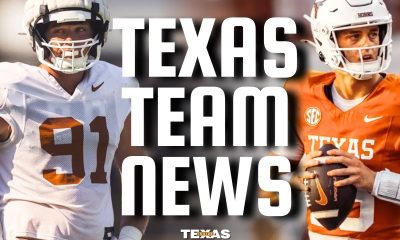












 | First Take
| First Take























